Standards Activity Overview
Lighting Council New Zealand represents the industry on all relevant lighting Standards and principal associated component Standards. These include the Joint Standards Committees of Standards Australia to formulate common trans-Tasman (AS/NZS) Standards as well as those for New Zealand (NZS).
Read the LCNZ Article in Electrolink Magazine: ‘The New Standard for Recessed Luminaires’ (Mar-Apr2017) below.
LCNZ representation on Standards Australia Committees
| EL-041 | Lamps and Related Equipment (AS/NZS60598-1 & Parts) |
| LG-001 | Interior Lighting |
| LG-002 | Lighting for Roads and Public Space |
| LG-007 | Emergency Lighting |
| LG-009 | Sports Lighting |
| LG-010 | Obtrusive Outdoor Lighting |
| IT-269 | Multi Function Poles |
Lighting Council also provides NZ representation on ISO/IEC Standards via IEC TC34, the International Committee for Lamps and Associated Equipment.
The joint Australia and New Zealand E3 MEPS Committee for Minimum Energy Performance of Lighting Products.
For further information on the work of these committees please contact us below.
Resources
Changes to the NZ Electrical Wiring Regulations
Lighting Council New Zealand participated in the review of the Wiring Regulations. The purpose is to give the Regulator (MBIE) more clearly defined rules to ensure all electrical installations comply with internationally accepted good practice. The impact on the electrical contractor will be severe in the event of a failure to comply, with a heightened level of surveillance of the industry.
This has been driven by the impending increase in trade between New Zealand and economies such as China, with a need to ensure all goods imported are compliant with appropriate safety and design standards. The proposals are framed such that the installer has the final responsibility for compliance, requiring them to ensure all product supplied and workmanship undertaken is in accordance with the standards prevailing.
The Supplier’s Declaration of Conformity (SDoC) requirements apply to all electrical appliances including lighting fittings intended for any purpose, be it domestic, commercial or industrial. This will impose extra administration costs for compliance records on a wide range of lighting products. It is intended that the increased level of surveillance promised by the Regulator has the effect of deterring opportunistic suppliers from attempting to market products that cannot be supported by appropriate test certification.
For further information, click below.
